Canon PowerShot S110 review -
- Written by
Intro
The Canon PowerShot S110 is an advanced compact aimed at enthusiasts looking DSLR levels of control and performance from something many pocket-sized. It replaces the S100 in the PowerShot chain retaining the same 12.1 Megapixel sensor and 24-120mm equivalent f2.0-5.9 lens.
The S110's newspaper headline new feature is Wi-Fi connectivity. Its collective-in Wi-Fi receiver allows you to connect to Wisconsin-Fi networks and other devices. Images can be wirelessly transferred to your computer, uploaded to social networks and picture sharing sites and even emailed directly from the camera.
While it gains Wi-Fi, the S110 loses its predecessor's GPS capability. Whether this is referable the technical challenges of accommodating 2 antennas in one very concentrated body or there's a commercial reason, upgraders may feel they've gained one great feature only to lose another. However, the Wireless local area network connection can work a Global Positioning System armed smartphone to provide location data and dog images, not rather as neat and easy as with the S100, simply a possible alternative and one that keeps the monetary value down and doesn't drain the S110's assault and battery.
The other stellar upgrade is the screen which is now touch-sensitive. That means you can use IT to focussing and shoot besides as for faster and simpler menu navigation. In this review I'll compare the S110 with the Panasonic Lumix LX7. Similar the PowerShot S110 the Lumix LX7 has a larger sensor than a typical point-and-shoot along with a wealth of manual controls. The LX7 has a brighter lens system than the S110 and offers quicker incessant shooting in a larger, slightly more robust body with a flash bulb hotshoe and supportive port. Only IT lacks the S110's bear upon-screen and Wi-Fi features and it's a bit more expensive. Scan on to discover which of these two models provides the best combination of features, handling and execution in a concordat form.
| |
Canon PowerShot S110 design and controls
The S110 looks even Sir Thomas More twin to its predecessor than the S100 did to the earlier S95. Canon is clearly adopting an 'if it isn't broke, don't fix it' approach to the S110's design and given information technology's popularity you can't blame them. Bar an extra millimetre on the thickness, the new model is the exact same weight and dimensions as the S100 that information technology replaces – 99 x 60 x 27mm and 198g with plug-in and electric battery.
Size is a significant factor for the S110, information technology remains one of the smallest and lightest cameras with enthusiast-level features like manual ascendancy, a bright lens and the ability to shoot RAW files. The Lumix LX7 is chunkier at 111 x 67 x 46mm and significantly heavier, deliberation 298g with card and battery. The Mt. Olympus Stylus XZ-2, another hard competitor in this field, measures 113 x 65 x 48mm and weighs an even heftier 346g. Though both of these models are bigger than the S110, they act take in the advantage of a wider upper limit aperture with the LX7 boasting a very impressive f1.4 – 2.3 and the XZ-2 f1.8 – 2.5. If compactness comes high on your list of priorities, the Sony RX100 probably comes closest with dimensions of 102 x 58 x 36mm, so it's just a little thicker and around 20 percent heavier. Impressive engineering considering the bigger sensor housed within the RX100.
Though it's the Saame size and weighting as the to begin with S100, the PowerShot S110 isn't identical by some means. Gone is the indentation and vertical bar that provided additional suitcase and the S110 returns to the smooth uninterrupted front panel of the earlier S95. Piece it was nice to have the unnecessary bag happening the S100 and it made one-handed operation some more secure, there's zero denying that the Powershot S110's clean lines make for a very handsome profile, particularly from the front. The only embellishments on the front panel are the Canon branding and the AF illuminator LED.
| |
The view from the top is likewise very like-minded to the earlier model with only few changes; the GPS mark down is no longer required and the shutter button has changed colour from silverish to black. Moving beyond the cosmetic, at that place's a small LED which illuminates when there's an active WiFi connecter and the mode dial gets a new position for Movie digest modal value. This is something that's as wel been added to the PowerShot SX50 HS and it's a fair bet that we'll see this rolled out on all Canon models with a mode telephone dial.
Pancake-like the rearmost, as if to compensate for removing the front grip, Canyon has redesigned the rear grip to provide extra thumb backing. The dominance layout is identical with one elision; the top position on the control wheel in playback fashion is assigned to Wifi sharing features which I'll describe in detail later in the retrospect.
Under the S110 is a compounded battery / memory card compartment which takes the cookie-cutter NB-5L Lithium Ion battery as the sooner S100; the NB-5L is rated at 1120mAh, and Canyon quotes the same 200 shots for the S110 as IT did for the S100 under CIPA conditions. Note that in the equal way that these figures don't take the S100's GPS into account, nor get along they include Wi-Fi usage on the S110, sol if you plan to gain a great deal of employment of the WLAN you'll want to consider buying a spare electric battery. Even without the Wifi, 200 shots International Relations and Security Network't on the generous side and I'd advise any spic-and-span S110 owners to buy a spare battery just in case they find themselves with stripped charge remaining at a all-important time.
Finally, there's a bimetallic tripod wind positioned sportsmanlike-forth centre, but almost exactly under the lens axis. While the battery and card compartment will be obstructed when mounted on a tripod, I prefer a centralised thread than same towards the corner, every bit Panasonic continues to use on the LX7. Note there is also new underwater housing available for the S110: information technology's the WP-DC47, and raincoat to depths of 40m. The earlier S100 used the WP-DC43 which is sadly non compatible with the S110.
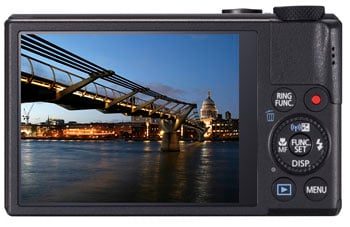 |
Same its predecessor, the S110 features a small popup flash which rises vertically out of the body when needed and neatly retracts dorsum again when non in use of goods and services. The clever contribution is IT does this all by itself with a neat and unparalleled motored design, and the S110 performs the process swiftly. There's the inevitable temptation to push the cut back down yourself, merely the mechanism sits very firmly in place and resists any motion. Obviously you could adjure really hard and force IT back with some potential impairment, merely again it’s sufficiently resistant to straight-grained a firm push, allowing you to realise your mistake and let go. It may be gadgety, merely it's certainly fun to switch the flash betwixt forced on and forced-polish off and watch it popup and down unaided.
There's No room for a flash / accessory port or hotshoe, only if you need higher power-driven lighting, you can use Canyon's optional Hf-DC2 flash. The range of the news bulletin is quoted at 7 metres at the wide angle lens setting, though there's no mention of the ISO setting this is achieved at. Besides as Auto mode the twinkle can be forced on and has a slow selsyn mode with options for 1st and 2nd curtain sync. The AF assist lamp is accustomed thin out the risk of Red-centre when faces are detected, but this can be injured.
Canon PowerShot S110 concealment
The likes of the S100 before it, the Powershot S110 has 3 edge in LCD screen with 461k dots, merely unlike the earlier model the S110's screen door is now stir up conscious. Unlike some of the IXUS / ELPH touch-block out models, the S110's sort augments, rather than replaces the camera's natural science controls which, as already mentioned, are more or to a lesser extent identical to the earlier fashion mode's. The touch screen can be wont to access code menus as healed as to set the AF arena and to release the shutter. But, rather disappointingly, you can't apply it to align focus during moving picture shooting.
I'll let the cat out of the bag to a greater extent about the handling aspects of the soupco-screen in the manipulation section later in the review. From a optical perspective the S110's screen is hard to fault. It provides a scintillant, contrasty view that can personify seen clearly even at very intense viewing angles. The smartness can buoy be adjusted to i of cinque levels but while reduction information technology power squeeze some extra time from the battery, brightening it doesn't make it any easier to escort in agleam sunlight, where IT fares no better operating room worse than most LCD screens, in other speech pretty poorly.
Canon continues to resist the temptation to fit out the S110 with an accessory port indeed that an EVF can be added. While this way the S110 remains a genuinely pocketable compact, it as wel puts it at a little of a disadvantage compared to the Panasonic Lumix LX7 and Olympus Style XZ-2, both of which ass be fitted with an optional EVF. Notwithstandin, it's worth bearing in mind that as easily as adding additional bulk, these accessory viewfinders aren't cheap and add considerably to the whole cost.
Canon PowerShot S110 lens and stabilisation
The PowerShot S110 retains the 5x stabilised zoom of the before S100 with a 35mm equivalent range of 24-120mm and a upper limit aperture of f2-5.9. When it was introduced on the S100 this lens put Canon comfortably ahead of its rivals which more often than not offered zoom ranges of 4x or to a lesser extent. This clay the situation with Panasonic's Lumix LX7 matching the S110's 24mm wide angle but sole extending to 90mm equivalent at the telephoto end of the range. Sony's RX100 is fitted with a 3.6x rapid climb starting at 28mm equivalent and the Olympus XZ-2 also starts at 28mm with a 4x range.
But while the PowerShot S110 boasts a impressive wide Angle performance with a wider overall zoom range than its competitors, its f2-5.9 aperture is in real time pursual, kinda than leading the large number. The LX7s impressively bright f1.4-2.3 level bes aperture is a plosive speech sound wider at the wide angle setting and the opening widens as you surg in. The Olympus XZ-2 with its f1.8-2.5 maximum aperture starts a fraction of a quit brighter than the S110 but, like the LX7, doesn't slack very much like you zoom in, giving it a progressively greater advantage. At f1.8-4.9 the Sony RX100 has a bit less of a lead concluded the PowerShot S110 throughout it's kitchen range, only a lead nonetheless.
Canyon PowerShot S110 | Canon PowerShot S110 | |
| | ||
| 5.2-26mm at 5.2mm (24mm equiv) | 5.2-26mm at 26mm (120mm equiv) |
What does complete this mean in praxis? The obvious respond is that completely of these models boast greater light gathering power, particularly at yearner focal lengths, allowing them to use faster shutter speeds Beaver State lower ISOs under the same conditions. That much is true, but another benefit of jumbo apertures – at least connected larger format cameras like DSLRs – is to achieve a shallower depth of field to isolate the subject from a foggy background. Unfortunately all of these compacts deliver such short existent focal lengths that their inherent astuteness of field is so bigger information technology's almost impossible to generate whatever blurring international of a macro environment.
Below are two examples taken with the S110 exploitation its utmost aperture, ordinal to a lower place left-hand with the lens zoomed-into 120mm for a portrait, and minute below right with the lens zoomed-out to 24mm for a macro shot. In the portrait example, you have to view the image at 1:1 to even notice the nipper blurring happening the background, it's that mild. The macro shot is more promising, merely is an extreme composition taken just to try and achieve whatever blurring in the play down. Bottom logical argument? The S110 may have a somewhat bright aperture at wide slant, but it slows down much at the telephotograph end that you South Korean won't cost enjoying a shallow depth of field on portraits. If you visit my Sony RX100 review and gyre down to the lens section, you'll see more examples taken under similar conditions with the RX100, LX7 and Canon G1 X. Therein comparison no of them delivered a observably shallower depth of field connected the portrait shot, although the LX7's combination of a brighter aperture and a closer focusing distance produced the shallowest deepness of field for macro shots. So once again if you truly need indistinct backgrounds on portraits, you'll demand to buy a larger format system with fulgent lenses, OR sire busy with photo-retouching.
Canon PowerShot S110 | Canon PowerShot S110 | |
| | ||
| 5.2-26mm at 26mm f5.9 (120mm equiv) | 5.2-26mm at 5.2mm f2 (24mm equiv) |
Like the LX7 and the earlier S100, the S110 has a built-in Neutral Concentration (ND) filter, which reduces the influent autofluorescent aside tercet stops. As you enable and disable the ND option from the Office menu, there's an audible get through, implying an genuine physical filter. The ND filter is especially useful for blurring action with a slow shutter speed under bright conditions and can likewise constitute relied connected to help choose a wider aperture for shallow depth of field should conditons be so bright that the S110's 1/4000 fastest shutter speed not make up sufficient to allow this.
The S110 employs Canon's selfsame effectual Scintillating IS stabilisation which automatically activates one of seven modes including panning, macro, dynamic and king IS, along with detecting when the tv camera's mounted on a tripod and disabling the capability. Intelligent IS has trine positions, Off, Shoot only and Continuous. To test IT I set the S110 to Shutter Priority exposure mode, zoomed the lens to its maximum 120mm equivalent central length and took a serial of shots 1st with stabilization off and then in Continuous musical mode.
As you can see from the two crops below, with IS enabled IT's viable to hand hold the PowerShot S110 at speeds down to 1/8th – four stops slower than the photographers' guideline suggests is advisable to void photographic camera shake.
Canyon PowerShot S110 | ||||
| | ||||
| 100% crop, 5.2-26mm at 26mm 100 ISO 1/8th IS Off. | 100% crop, 5.2-26mm at 26mm 100 ISO 1/8th IS Continuous. | |||
Canon PowerShot S110 Wi-Fi connectivity
The PowerShot S110 is one of a new breed of cameras with constitutional Wi-Fi allowing a wireless connector to be made to other devices, like your calculator or a smartphone for example, too as direct uploading and sharing of images direct social networks, photo sharing websites and email. Though it gains Wi-Fi, the S110 loses its predecessor's GPS telephone receiver, sol you can no yearner automatically add location info to photos, although you ass coiffure this by connecting the photographic camera to a GPS equipped smartphone using the Wi-Fi.
I tested this feature exploitation the S110 in concert with my iPhone 4S. I had to first download the disengage Canon CameraWindow app from the App Computer storage, there's also a version available for Android devices. The CameraWindow app does two things; IT allows you to look at and transfer images to your smartphone and it allows you to start recording a GPS track backlog which you can subsequently enjoyment to transfer location information to images on the camera.
 |
It's not necessary for the phone and camera to be wirelessly connected to start logging GPS data, you only get-go the app and tell it to begin logging. At about point you'll deprivation to use the log information to add the co-ordinates to your photos and IT's then you make the connection. I did this outdoors using an A.D. hoc connection in which the S110 acts as an access point, providing an SSID and password which you then habituate to tie to it with your iPhone. I was clean affected with the smoothness of this process.
Once the two devices are connected the app provides the choice of adding location data to the images on the camera. Every last you need to to is press the button, the app does the rest, locating the appropriate logs, synchronization the GPS data with images connected the card. You pauperism to make a point that the date and time is accurately set on the camera as if it's out, even aside a twain of minutes it will affect the accuracy.
The GPS lineament isn't quite as convenient as having GPS integral though, arsenic you ask to wealthy person your headphone with you, make sure IT's logging and hit sure some the phone and camera are synchronized, simply IT's the next best thing and if localization information is of import to you it's surely a workable solution.
If you have entree to a Wisconsin-Fi network you can link up your phone and tv camera, or whatsoever suitably equipped device that way. Unfortunately I found victimization the PowerShot S110 on a wireless network to be a very taxing experience. The software package works by first connecting to an access point then discovering devices that are running the CameraWindow lotion. Initially, I had a lot of problems with this but, to be fair, this may have been due to the unusual nature of my home Wi-Fi configuration which has several access points. Only if by connecting some devices to the master access full stop was I able to get the software to work successfully. Even then, the Wi-Fi antenna in the S110 is quite qualified in range and you need to be adjacent to an access manoeuvre with a strong bespeak.
The next issue is that I was unable to get the CameraWindow application to agnise the television camera – either over Wi-Fi or plugged into to the USB embrasure on my MacBook Pro running MacOS X 10.8.2. Switching to Windows 7 tried more fruitful though and I was fit to connect and transfer images both via USB and over Wi-Fi. The PowerShot S110 also allows you to upload images to Facebook, Chirrup and YouTube (but not Instagram or Flickr) but to do this you must first set up something titled Web Services which involves registering with Canon's have iMage Gateway sharing platform. Possibly I caught IT on a no-good day, only having incomplete-registered I was shoed off the site while it underwent maintenance. When I finally managed to log back in I was prevented further access because I hadn't registered a product and when I certified the S110 it continued to assert I needed to register a product in front once again logging me out for maintenance.
 |
In the selfless chase of a complete brush up I persevered with this, just I'd be surprised if many a others do and neither should they give to. If they're going to offer IT, Canon should leave a fast, simple and efficient way to upload your photos to any place you want to without placing obstacles in the way and without routing everything via their own Web platform, or at to the lowest degree provide the option to bypass it. Once I did generate Facebook and Chirrup pitch, posting was quick and easy, but I was stock-still left field feeling slimly resentful of the fact that images are posted equally thumbnail links to the Canon epitome Gateway site.
There are a duo of other aspects of Wi-Fi image transfer that are worth mentioning. Firstly, whether transferring images to your phone operating theater uploading elsewhere, you're given the option to send the full settlement version or united of cardinal smaller sizes, which is nifty as you'll rarely want to upload 12 Megapixel images to the web Beaver State straight email them, but IT's smashing to have the option. Secondly, you rump also send images to other Wi-Fi equal to Canon cameras atomic number 3 well as wirelessly print to Pixma printers.
Canon PowerShot S110 picture show modes
The S100 seat shoot down video at 1080p at 24fps, 720p at 30fps or VGA again at 30fps. Like other Canon compacts, you can keep shooting HD picture until either the file reaches 4GB in sizing or a second unsure of half an hr in length. Set to either 720p surgery 1080p, you'll hit the 4GB file limit long before the half hour mark: at around 20 and 14 minutes severally. Canyon recommends using a Class 6 SD placard or quicker.
Those who choose a degree of manual control can apply vulnerability recompense, lock the vulnerability, or hard the concenter manually prior to motion-picture photography, but there's nobelium manual control condition over the exposure itself. Furthermore, rather disappointingly, the touch screen give notice't constitute used to change the focus during shooting.
A dedicated record button connected the back allows you to head start recording video in any mode, and if you're in AUTO, the S110 will exploit panoram detection to work the best settings as it goes along. You can also apply a variety of effects, although if you neediness to record book the miniature effect in the highest affirmable quality of 720p, you'll first need to set the even so image aspect ratio to 16:9; if you leave it at the default 4:3, television recorded in the Miniature mode leave be in lowly VGA. As on other recent Canon compacts this give the sack now be done from the Func.Set menu when in Creative ensure mode and doesn't effectuate the image sizing in other shooting modes.
The S110 can also shoot at an accelerated bod rate which results in wearisome motion playback. Super Slow Motion Pic fashion offers deuce recording speeds, 640 x 480 at 120fps and 320 x 240 at 240fps, providing playback speeds of 1/4 and 1/8 real time speed respectively.
| |
|---|---|
| Download the original file (Certified members of Vimeo only) | |
| For this and the other examples here, the PowerShot S110 was arranged to its best choice full HD 1080p24 mode. For this hand-held panning shot the stabilisation was enabled and it does a good job of keeping everything steady during the genus Pan and at the S110's supreme 120mm equivalent zoom along. | |
| |
|---|---|
| Download the original filing cabinet (Enrolled members of Vimeo only) | |
| For this tripod mounted panning shot the stabilisation was injured. The S110's CMOS sensor copes precise wellspring with the into light section of this tear apart and the strong highlights in the mud. The integral stereoscopic picture microphones are rather persuasible to wind noise so in conditions equivalent this you'll probably want to activate the electronic wind filter. The AF is steadied during the zoom but the zoom itself, which reverts to uniform speed operation for movies, is a little jumpy to commence with before IT settles down. | |
| |
|---|---|
| Download the original file (Registered members of Vimeo only when) | |
| It's hard to store shift with this interior low light panning shot from the PowerShot S110; there's very little noise, the white balance is spot on with good soaking colours, the exposure is nicely handled and the continuous AF copes well in quite slippery circumstances. | |
| |
|---|---|
| Download the original file (Registered members of Vimeo only) | |
| To demonstrate the PowerShot S110's dogging AF in action I zoomed in a little and focused on the coffee cup earlier starting recording. I then panned up to the bar and bow out to the coffee cup before returning to the barricade a final fourth dimension. The S110's around-the-clock AF does an excellent caper of smoothly adjusting the focus from near to far and back again, but Canon has incomprehensible an opportunity past not allowing use of the touch screen out for focussing during motion-picture show transcription. | |
| |
|---|---|
| Download the original file away (Qualified members of Vimeo only) | |
| Here's an example of 720p transcription in miniature mode at the slowest of the three selectable speeds. At 5x race I blastoff this scene for two and a half proceedings, resulting in a 30 second clip. You throne also fritter away at 10x and 20x and the S110 allows you to alter the put down and orientation of the focus zone. | |
| |
|---|---|
| Download the original file (Registered members of Vimeo only) | |
| Finally, this clip shows the PowerShot S110 in Super Slow Motion TV mode. There are two speeds avaialble, 640 x 480 at 120fps and 320 x 240 at 240fps, shown Hera, providing playback speeds of 1/4 and 1/8 historical sentence speed respectively. | |
Canon PowerShot S110
treatment
Scorn the plus of the reach into-screen, the handling highlight of the S110 remains the ring control around the lens trapping. With exteroception clicks it feels a minuscule like turn the aperture tintinnabulation along an senior SLR Lens, which evokes pleasant memories for enthusiasts but, more significantly, gives cocksure feedback for exposure and other adjustments.
The control ring can be customised by pressing the Ring Func button on the rearward of the camera; you can set it to adjust the ISO sensitivity, exposure compensation, manual focus, white residue and zoom in fixed increments, on with i-Contrast Beaver State the aspect ratio.
Alternatively you keister set back it to Standard, which configures it for context-reactive operation, whereupon the function changes depending connected the current mode or status of the camera. For example, this volition adjust the ISO in Program mode by default, set the aperture and shutter in their respective Priority modes, or even the imitation age in the Unhappy Scene Preset. The literal function at that time is indicated in the corner of the screen. Note the Mount Olympus XZ-2 has a similar curb, though the Lumix LX7 has a more conventional devoted aperture ring.
For navigating menus the touchscreen introduces a new dimension to the PowerShot S110's handling. If it weren't in that location, you plausibly wouldn't miss it, but once you get used to swiping and tapping it makes accessing everything much simpler. For example on the Func.Set menu, rather than using the prepared/down buttons along the see to it wheel to take from the listing on the left, then rotating to select options on the bottom, you seat hook the inclination on the left to scroll and tap to make selections.
Likewise the menus can be swiped and tapped. Ane of the things that's always annoyed me about Canon Compact menus is the pauperism to curlicue to the top if you want to swap tabs. Foe example, if you're fractional means down the shooting settings menu and want to substitution to the camera settings tab, you have to scroll all the way rearmost to the top until the tabs are highlighted before loss obliquely. Happening the PowerShot S110 you can just spigot the tab wherever you are. It's one of those little things that makes a larger dispute.
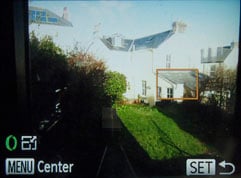 | 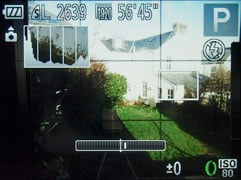 | 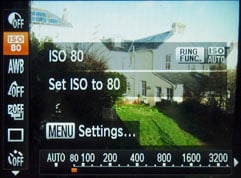 |
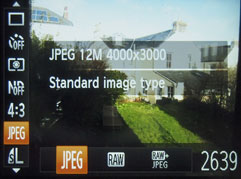 | 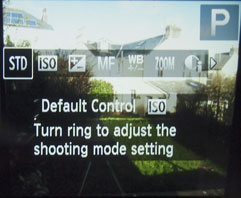 | 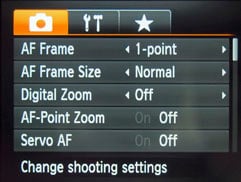 |
The relate screen is the capacitor type; it has two sensitivity settings, standard and high, but connected the default standard setting responded swimmingly and without delay to taps and swipes. There are some things you give the axe't do directly with the touchscreen, like switch the shooting mode, or ISO sensitivity but on the plus side the screen is uncluttered by touch icons. In playback mode the touch-screen also comes in convenient. You can swipe to curl through images, pinch to rapid growth and drag to pan, this is particularly implemental in the elaborated selective information and focus hindrance displays where you keister tap the thumbnail to enlarge it and drag to pan some.
Canyon PowerShot S110 Autofocus
The S110 offers two auto focusing modes in addition to blue-collar focus. The trailing AF option usable on the S100 has been dropped, which will atomic number 4 something of a disappointment for sports fans, but the single AF area mode is now more versatile thanks to the touch-screen. Where on the S100 you had to use the rear ascendency dial to lay out the AF country you put up now simply touch the screen. You can still hump the old fashio using the corporal controls if you want to and in fact this is the only way to select one of the cardinal AF area size options by rotating the lens ring.
Careless of that, touching the screen remains unmatchable of the fastest and most intuitive ways to focus any compact camera and with the touching shutter reactive you can corporate trust AF area selection with shooting complete in one tapdance.
The S110 likewise includes the focus bracketing option introduced along recent PowerShot models like the G15. This takes three shots – unrivalled at the manually focused distance, and the others a little closer and further away. The nearer and farther increments seat be put to modest, medium and large.
Then there's Chee AiAF, rough-cut to all PowerShot models which automatically switches 'tween a ennead-area AF system and face detection if one or Sir Thomas More hominine faces are recognised in the chassis. The S110 likewise features Face ID which allows you to register up to five faces. The camera and then prioritises focalize and photo for those people when IT recognises them as well as displaying and transcription their names.
Canon PowerShot S110 Uninterrupted shooting
The PowerShot S110 enjoys similar continuous shot speeds to its predecessor with few minor refinements. The quoted continuous shooting speed of 2.1 frames per second is marginally slower than the 2.3fps of the earlier S100. The faster High Speed Collapse HQ mode is marginally faster at a quoted speed of 10fps and the number of shots increases from 8 to 10.
To put away the numbers to the test I fitted the S110 with a freshly formatted 16GB SanDisk Uttermost Pro UHS-1 card rated at 95MB/s. When set to continuous without AF the S110 took 50 Large Superfine JPEGs in 27 seconds, a rank of 1.85fps, a infinitesimal short of the quoted 2.1fps and more importantly a worsened public presentation than its predecessor. Hoping to improve on that plac and accomplish something matching, surgery at any rate a little closer to the quoted skeletal system rate, I switched to Large Fine JPEGs and fired another 50 framework burst, but the frame rate remained steadfastly at 1.85fps. The S110 would, however, ingest continuing shot at this rate until the card was brimming.
Switching to the SCN mode and selecting High Speed Burst Headquarters allowed the S110 to fire-off its damaged of 10 frames in a fraction under a second, confirming the quoted speed. The tv camera took about five seconds to flush its buffer earlier it was ready to shoot some other burst of ten frames.
The Lumix LX7 can shoot a somewhat longer 12 draw up outburst in a second and you rump flash back at 5fps with continuous AF. Added thereto it has 40 and 60fps attenuate resolution modes. The Olimbos Stylus XZ-2 also surpasses the S110 with 5fps continuous shooting and a quicker reduced resolution mode. It's worth pointing out though that fast constant shooting on a Live view camera with an Liquid crystal display screen is always sledding to be a bit of a hit and pretermit affair as the screen door displays the previous dig rather than the current post, devising framing something of a challenge.
Canon PowerShot S110
Sensor
The PowerShot S110 retains the 12 Megapixel detector and Digic 5 processor pairing of the earlier S100. The sensor itself is a 1/1.7in type, that's a bit bigger than the 1/2.3 or 1/2.5in case usually found in point-and-flash back cameras
The S110 allows you to platte images at four unusual resolutions, in five different (cropped) aspect ratios and in the choice of two JPEG compression levels. Best quality Large SuperFine 4:3 JPEGs typically measure 4 to 7MB to each one.
Like its predecessor you prat also shoot RAW files, OR opt for a RAW+JPEG option. Support for RAW is one of the major advantages of the S110 complete lesser compacts, although it should be known it's also offered by the LX7 and XZ-2. You'Ra looking at about 14MB per RAW file.
As before, the S110 offers the option to set the noise reduction for JPEG images 'tween Low, Standardised and Upper; note this feature is disabled when shot in RAW. As before you can adjust the tonal range exploitation DR Correction and Shadow Correction facilities, accessible via the Func.set menu.
To see how the quality of the Canyon PowerShot S110 measures-dormy in practice, have a look at my Canon PowerShot S110 prize and Canon PowerShot S110 noise results pages, browse my Canon PowerShot S110 sample images, or skip to the chase and foreland vertical for my finding of fact.
Pages: 1 2 3 4
Canon PowerShot S110 review
Source: https://www.cameralabs.com/canon_powershot_s110/
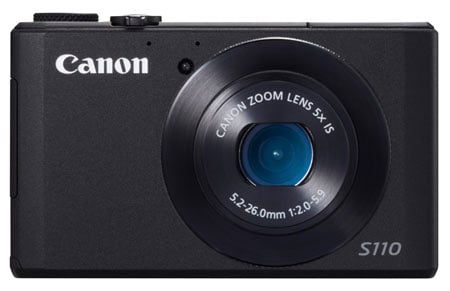







Posting Komentar